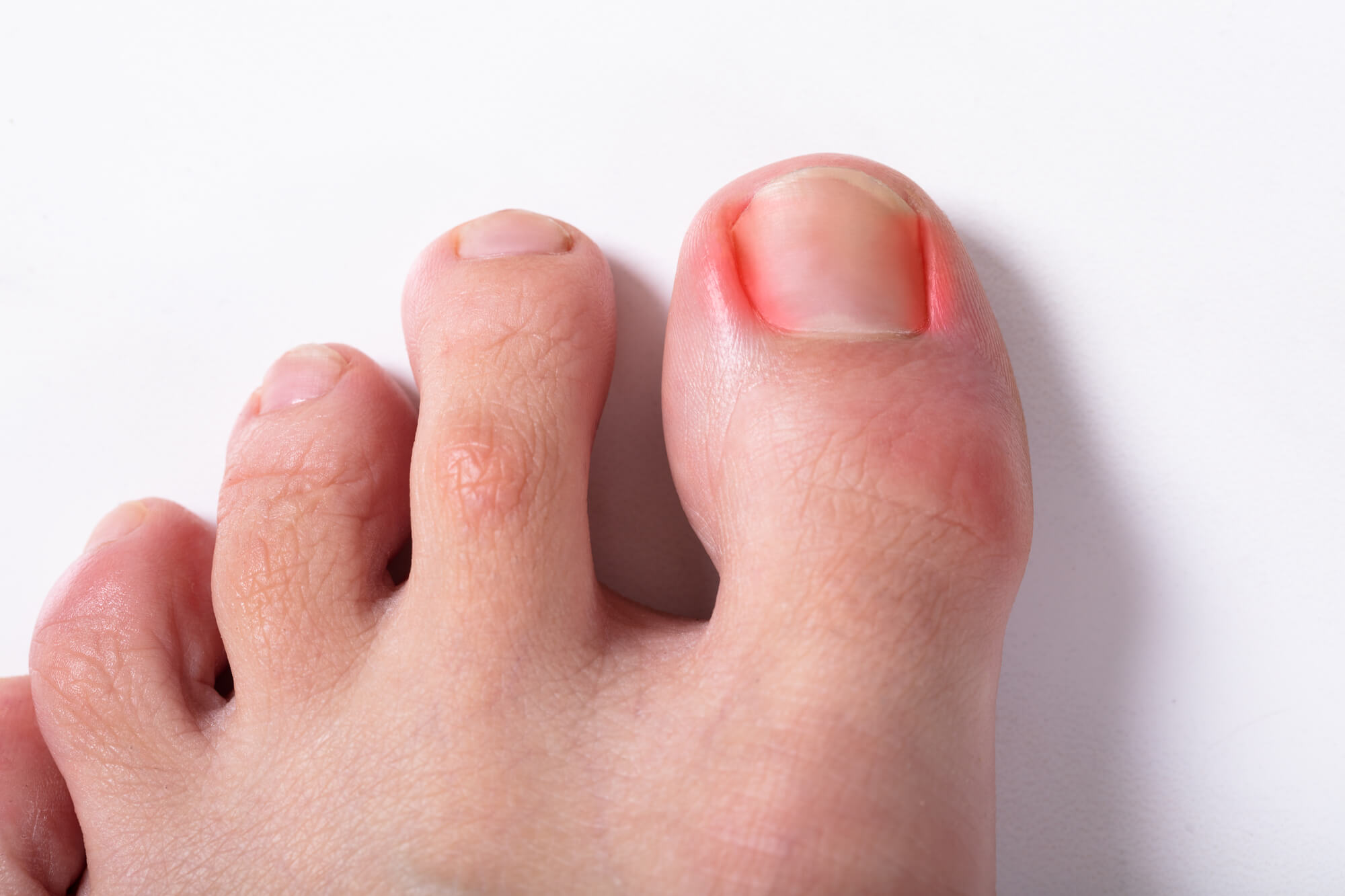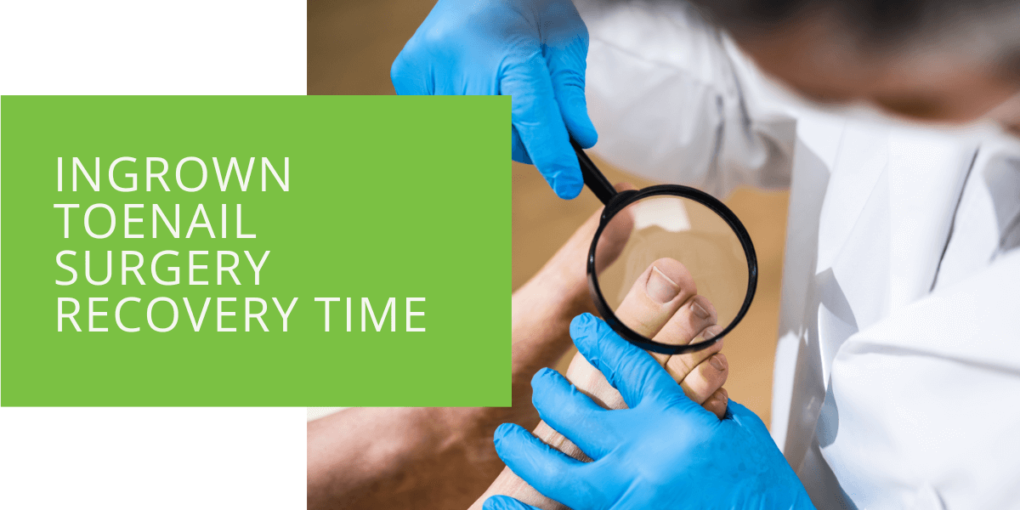Understanding Ingrown Toenail Surgery Recovery Time
Dealing with the discomfort of an ingrown toenail can be excruciating, and sometimes, surgery is the only viable solution to alleviate the persistent pain. If you've recently undergone ingrown toenail surgery, comprehending the intricacies of the recovery process is paramount for a smooth and successful rehabilitation. Let's explore each phase of your journey towards recovery in detail.
Key Takeaways
- After ingrown toenail surgery, prioritize rest, elevation, and cleanliness to promote optimal healing and minimize the risk of complications.
- Stay vigilant for signs of infection, such as increased pain, redness, or swelling, and promptly seek medical attention if any concerns arise.
- Adopting proper nail care practices and footwear choices can help prevent the recurrence of ingrown toenails, ensuring lasting foot health and comfort.
What to Expect After Ingrown Toenail Surgery
Following ingrown toenail surgery, it's normal to encounter discomfort and swelling in the region surrounding the affected toe. The sensation of numbness might persist initially due to the local anesthesia administered during the procedure. Your podiatrist will diligently dress the surgical site with a bandage to shield it from external elements, reducing the likelihood of infection. Additionally, you may be prescribed oral antibiotics or antibiotic ointment to stave off any potential infections.
It's crucial to note that while discomfort and swelling are typical post-surgery symptoms, they should gradually diminish as the healing process unfolds. However, if you experience severe or worsening pain, it's imperative to contact your podiatrist promptly.
Timeline of Ingrown Toenail Surgery Recovery
Immediate Post-Surgery Period
In the immediate aftermath of your ingrown toenail surgery, prioritizing rest and elevating your foot is crucial to minimize swelling. It's common to observe slight bleeding, which can be managed by applying gentle pressure with a clean cloth. Engage in activities that promote relaxation and avoid exerting undue stress on the operated toe. Keeping the foot dry is paramount during this stage to facilitate optimal healing.
First Week After Surgery
During the initial week post-surgery, you may need to change the dressing on your toe regularly as per your podiatrist's instructions. Maintaining cleanliness and dryness of the surgical site remains imperative, and adherence to prescribed pain medication is essential for managing discomfort effectively. Incorporating gentle foot exercises, as advised by your healthcare provider, can aid in promoting blood circulation and expediting the healing process.
Weeks 2-4 After Surgery
As you progress into the second to fourth weeks of recovery, you should notice a gradual improvement in your symptoms. Swelling and pain should gradually subside, and the toe will exhibit signs of healing. Consistently following your podiatrist's guidance regarding soaking your foot in warm water and applying antibiotic ointment will facilitate healing and mitigate the risk of infection.
Full Recovery Timeline
Achieving complete recovery from ingrown toenail surgery is a gradual process that may span several weeks to months, contingent upon various factors such as the complexity of the procedure and individual healing capabilities. Attending all scheduled follow-up appointments with your podiatrist is imperative to monitor your progress meticulously and promptly address any concerns.
While patience is crucial during the recovery journey, it's equally important to remain vigilant for any signs of complications, such as infection or delayed healing. Your healthcare provider should promptly communicate any concerns to ensure timely intervention.

Activities and Restrictions During Recovery
During the recovery phase, it's imperative to exercise caution and refrain from engaging in activities that could potentially jeopardize the healing process. Avoiding strenuous physical activities, wearing tight-fitting footwear, or subjecting the foot to prolonged periods of pressure is paramount to prevent undue stress on the operated toe. Adhering to these restrictions diligently will expedite the recovery process and minimize the risk of complications.
Signs of Infection and When to Seek Help
Vigilantly monitoring the surgical site for signs of infection is crucial during recovery. Any escalation in pain, redness, swelling, or discharge from the surgical site warrants immediate attention from your podiatrist, as these could indicate a potential complication requiring prompt medical intervention.
Follow-Up Care and Post-Operative Visits
Scheduled follow-up appointments with your podiatrist are pivotal in ensuring a successful recovery. These visits allow your healthcare provider to assess your healing progress, make any necessary adjustments to your treatment plan, and address any concerns or queries you may have. Consistent communication and collaboration with your podiatrist are essential for achieving optimal outcomes and mitigating the risk of complications.
Long-Term Care and Prevention Strategies
Adopting proper nail care practices is paramount to mitigate the risk of recurrent ingrown toenails in the future. This includes trimming nails straight across and avoiding cutting them too short, which can predispose them to becoming ingrown. Additionally, wearing properly fitting footwear that provides ample room for the toes and avoiding tight, constrictive shoes can help prevent the recurrence of ingrown toenails.
Conclusion
Navigating the recovery process following ingrown toenail surgery may seem daunting, but ePodiatrists are committed to providing you with the guidance and support you need at every step. Our experienced team ensures comfort and facilitates a smooth recovery journey. If you're experiencing persistent discomfort or need ingrown toenail treatment, don't hesitate to schedule an appointment with us. Together, we'll work towards restoring your foot health and overall well-being.

